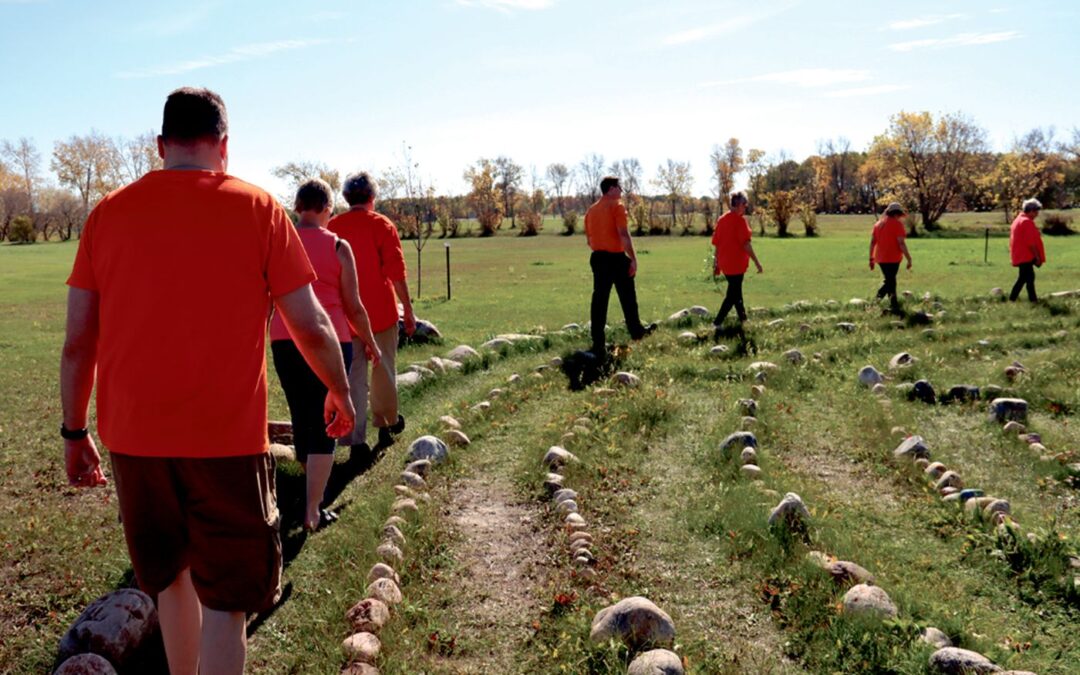By: Nicole Taylor, Local Journalism Initiative Reporter
Last Tuesday, members of the Moosomin community came together at the Moosomin Labyrinth to mark the National Day for Truth and Reconciliation. The event offered a space for reflection, education, and remembrance, with participants walking the labyrinth accompanied by traditional drumming and cultural practices rooted in Indigenous tradition.
The gathering aimed to honour the lives lost and the survivors of Canada’s residential school system.
“It’s a wonderful place to reflect, with the accompany of the drum, we are calling in the ancestors that lived on this land and honouring their spirits,” said Joy Hamilton.
“My grandfather was a residential school survivor so it’s important for me to celebrate his resiliency and to also show my children what it means to be Indigenous. Hamilton’s grandfather is a survivor of Cross Lake Residential School in Manitoba.
“His parents would come over on the canoe to see him and his three brothers, and they were beaten for it,” said Hamilton, “It caused that greater divide between the child and the parents because when they did get to go home for that two weeks in the summer, they’d say don’t come back, and they wouldn’t understand. The parents never knew what they were sending their children into to begin with, but after a few generations, now these parents know what is going to happen to them at these schools, so it was torture for them.
“I think on this day it’s important to remember and talk about the truth behind what happened, but it’s also a day to celebrate the resilience of the Indigenous people. They didn’t steal what they intended to take, we got it back, and now we are free to celebrate. They started these schools to kill the Indian in the child, and they were not successful. We are still here,” said Hamilton
Carol Adair, one of the organizers, spoke about the decision to host the walk at the labyrinth.
“I thought of it because you can use labyrinth activism. As you walk it, you celebrate or bring something to awareness, the whole idea of whatever you are talking for,”said Adair. “I thought, there’s not a lot of that in Moosomin, and I thought ‘wouldn’t that be neat if we could walk and honour it,’ because it just seemed to grab me that we hadn’t been doing enough.”
For many, the event was both a personal and communal moment of reflection.
“I like the idea that every child matters,” said Diane McLeod. “It’s good to remember that lots of people have lots of troubles, and if we can be there, and maybe just by learning about things, we can help them in that way. The labyrinth idea is an interesting idea, to pause and think about things.”
“It’s a meditative practice that I find good for my mental health,” McLeod added. “I think it’s wonderful to have the opportunity to do this. How fortunate it is to have the life that I had. I don’t think it hurts to be reminded that there are lots of people less fortunate than us.”
“I think it’s important to take time to celebrate the Indigenous lives and to think of the people that didn’t come home from the residential schools,” said Beth Bratton.“It makes your heart feel sad when you think of that. I think Joy definitely made us aware of a lot more things, and she’s done a very good job of it. I think it brings to light, too, that residential schools were closed not very long ago,” Bratton said. “These celebrations or memorials make us think about that kind of stuff.”
